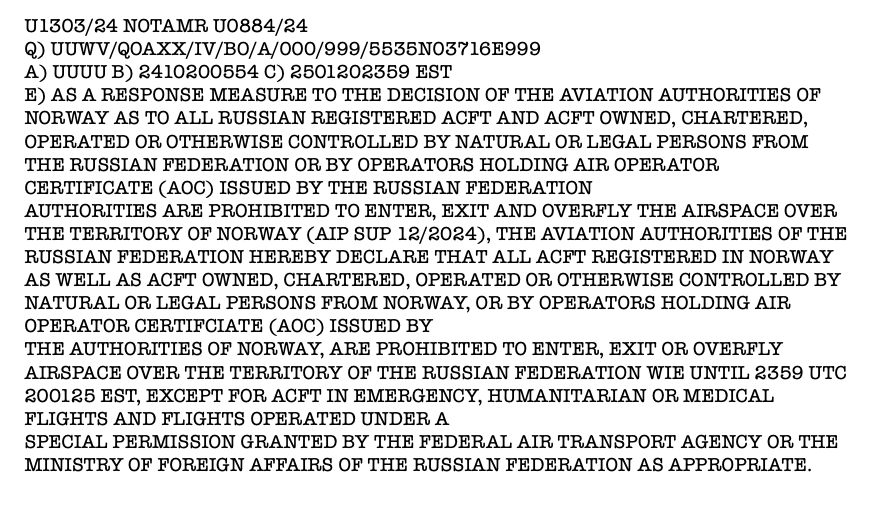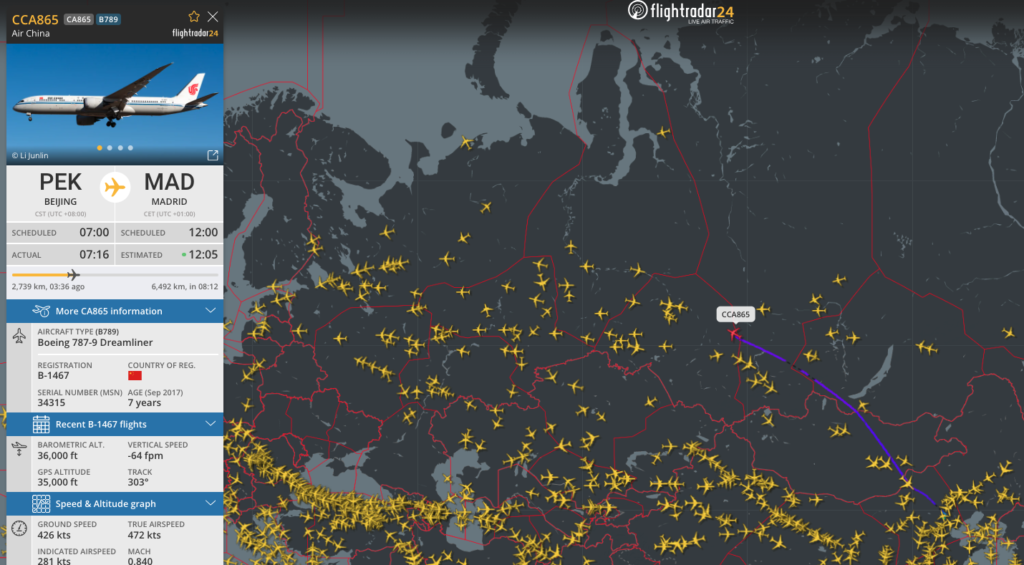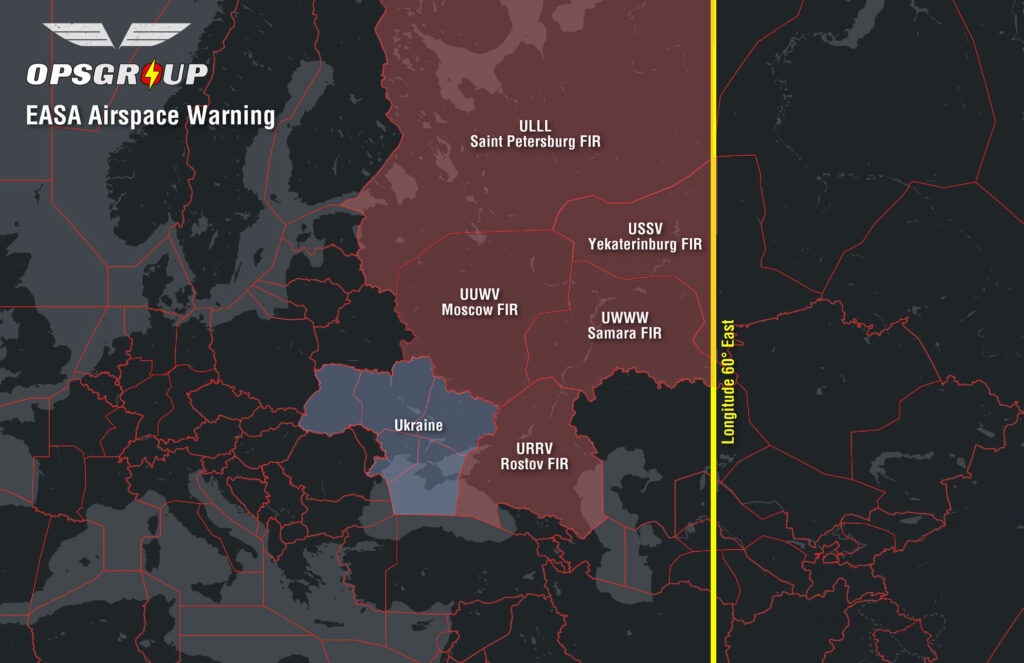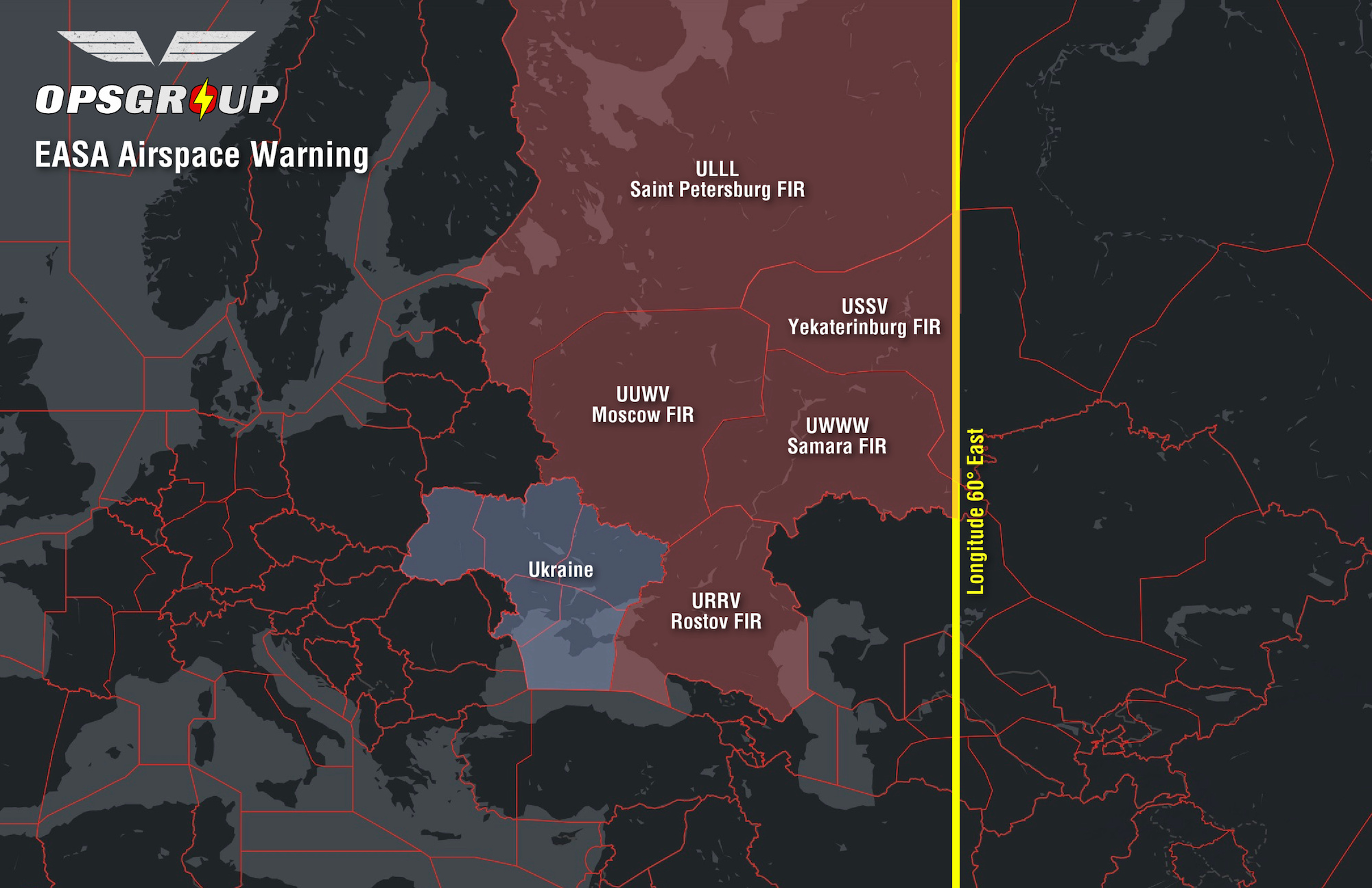Key Points
- EASA has issued a new airspace warning for Russian airspace following the likely shoot down of Azerbaijan Airlines Flight 8243 on approach to URMG/Grozny Airport on December 25 by a surface-to-air missile.
- Operators are advised not to enter Russian airspace west of longitude 60 degree east (the entirety of Western Russia) at all levels due to the risk of being unintentionally targeted by air defence systems, and extensive GPS interference.
- Previous state-issued airspace warnings have been confined to areas in close proximity to the Ukrainian border. The new EASA warning suggests a significant escalation in airspace risk.
What’s changed?
Ukraine has strengthened the frequency and intensity of missile and drone attacks on targets well within Russian territory.
The latest occurred this week on January 14 – a combination of cruise and ballistic missiles and the largest drone strike yet (over one hundred and forty devices) against infrastructure across Western and Southern Russia, as far as 680 miles from the border. Russian air defences reportedly shot down a number of them.
The war with Ukraine has entered a new phase which no longer limits airspace risk to the primary conflict zone.
Azerbaijan Airlines Flight 8243
EASA’s new airspace warning appears to be in direct response to the downing of an Embraer passenger jet on December 25 at URMG/Grozny airport, Southern Russia.
The crew were on approach when the aircraft suffered sudden damage which was initially misidentified as a bird strike.
The aircraft later crash landed following a diversion to UATE/Aktau airport in Kazakhstan.
Limited analysis of the wreckage appears to indicate shrapnel damage consistent with a surface-to-air missile. The most likely culprit was a Pantsir air defence system – a radar guided medium range SAM not dissimilar to the Buk system used to shoot down MH17 over Eastern Ukraine in 2014.

Photos of AZ8243 seems consistent with shrapnel damage likely caused by the impact of a surface-to-air missile.
It was later confirmed that air defence systems were responding to a Ukrainian drone strike in the area at the time.
While not official, it is almost certain AZ 8243 was mistakenly targeted. In any event we will have more answers soon – ICAO Annex 13 requires a preliminary report to be issued within thirty days of the accident (of which Russia is a member state).
No one’s overflying Russia anyway, right?
This simply isn’t the case. It’s true the Russia has imposed reciprocal airspace bans on aircraft registered to a large number of countries (including the US, Canada and the EU). This is in response to political sanctions, not risk.

It may keep us away, but this is a sanction – not an airspace warning.
Those from China, Turkey, the Gulf States and others are still allowed. And until now, they have been overflying airspace with no active warnings in place.

Russian airspace was (and still is) receiving international air traffic.
The EASA warning
EASA issued its new warning on January 9 via a Conflict Zone Information Bulletin (CZIB).
A note about EASA. Its advice isn’t binding – it is provided for the consideration of its member states and does not represent an actual flight prohibition.
However, history has shown it does have a strong bearing on the rules imposed – as a result, we are likely to see to number of new state-issued warnings for Russia in the coming weeks.
The CZIB recommends operators do not enter Russian airspace (west of longitude 60 degrees east) at all levels. This affects the Moscow, Rostov, Saint Petersburg, Yekaterinburg and Samara FIRs.
EASA advises that the deployment of Russian air defence systems to these areas in response to Ukrainian drone and missile attacks could directly threaten the safety of overflying aircraft.
It argues Russia does not have adequate protections and procedures in place to ensure the safety of civil aviation. The apparent downing of AZ8243 is testament to that fact.
Beyond the risk of misidentification, the warning also cites dangers related to GPS interference (including spoofing) being used to deter aerial threats with little regard to the effect on civil aircraft in the area.

Safe Airspace
At safeairspace.net, our team faces a conundrum.
Russia oversees well over 6.6 million square miles of sky and is transcontinental in scale.
Towards its south-eastern borders with China and Mongolia the risks associated with the conflict in Ukraine are low to non-existent.
To the west, the risk is high which is why EASA’s new warning makes a distinction based on a line of longitude that divides the country in two.
The same applies to our level of warning for Russia at safeairspace.net – where a Level 2 (Danger Exists) remains in place. But in light of recent events, we would advise against overflights of Western and Southern Russia at this time.
Get in touch with us
Our team is available around the clock. You can reach us at blog@ops.group – we’d be happy to help with any questions you may have.
More on the topic:
- More: Airspace Violations: Spillover Concerns in Eastern Europe
- More: Ops to Europe: How to Get a Third Country Operator (TCO) Approval
- More: EASA Removes CZIBs: Middle East Risk Gets Harder to Read
- More: Why EASA has Withdrawn Airspace Warnings for Iran and Israel
- More: SAFA Ramp Checks: The Top 5 Offenders (+Alcohol test)
More reading:
- Latest: Mexico Customs Surprises: Pills, Vapes, and Laptop Rules
- Latest: Greenland NAT Alternates: Dec 2025 Update
- Latest: Crossing the Quiet South: From Australia to Argentina
- Safe Airspace: Risk Database
- Weekly Ops Bulletin: Subscribe
- Membership plans: Why join OPSGROUP?











 Get the famous weekly
Get the famous weekly 





